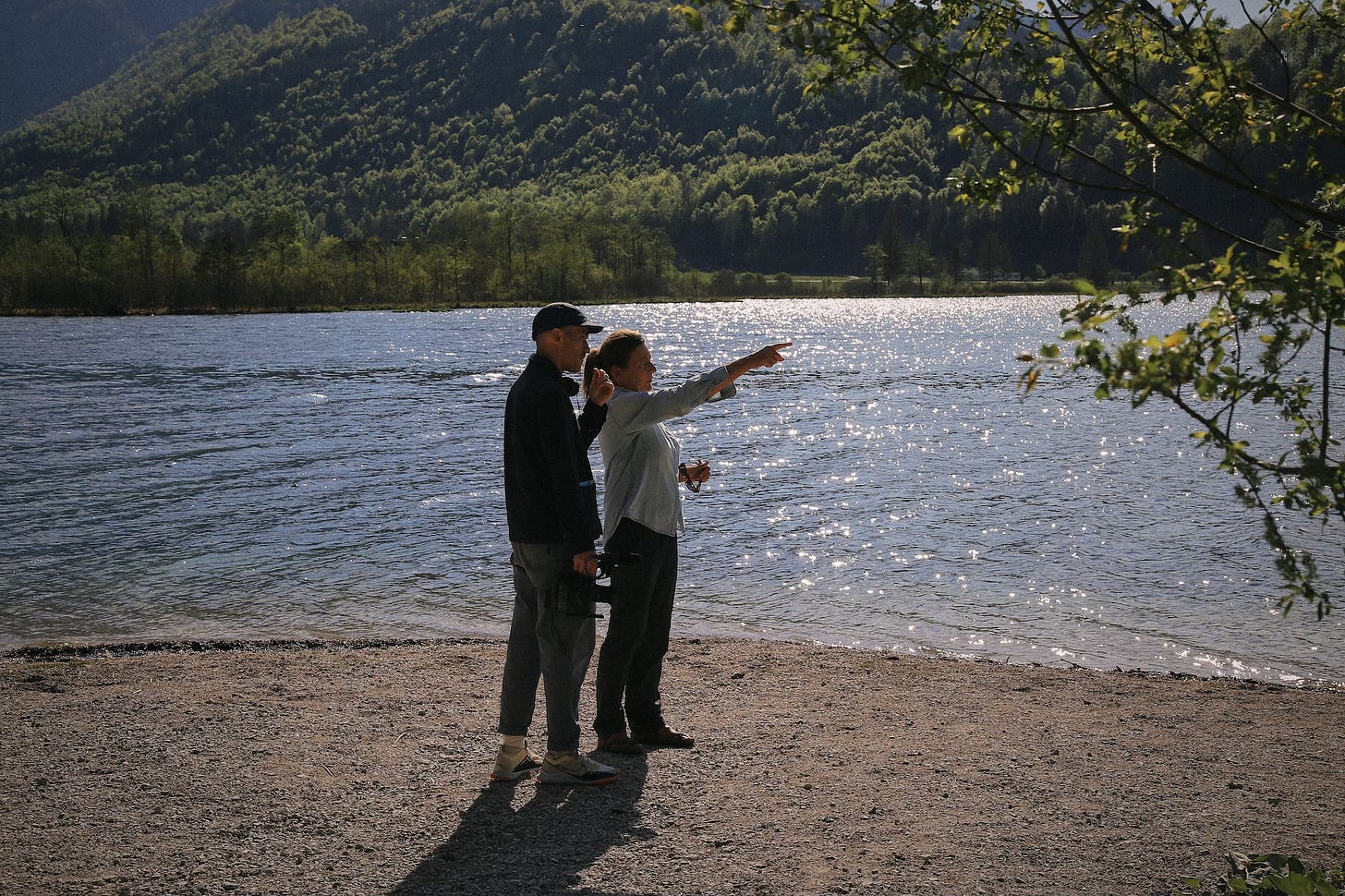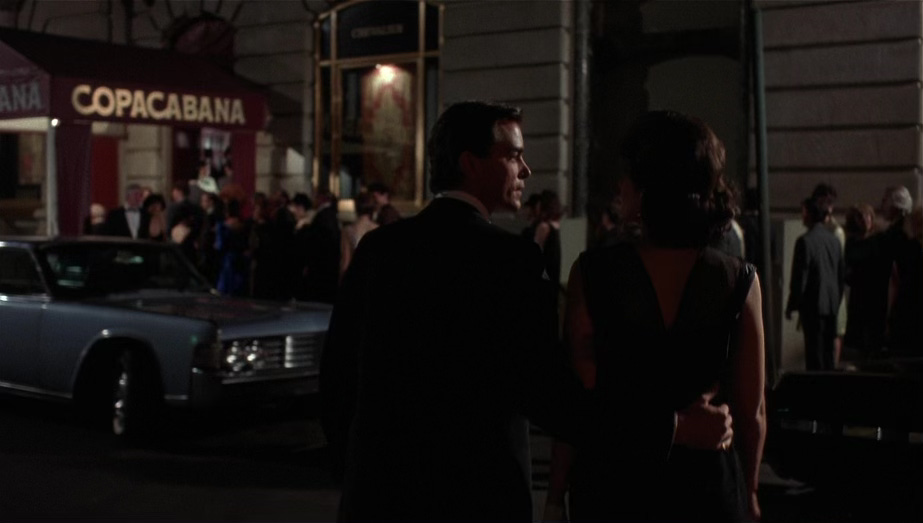A conversation with Elaine McMillion Sheldon. PART TWO.
A website for your film, collaboration, and trust
This is part two of a conversation with fellow filmmaker Elaine McMillion Sheldon. You can read part one over at Elaine’s wonderful substack here, where we talk about the website for her new film, casting and more:
Elaine and I connected about our substack endeavours. I think we both wanted to find a way to write about filmmaking and documentaries that more reflected how we feel about it, and in a way that fed into the work, not detracted from it.
I love speaking with Elaine - our conversations are really open and inspiring and somehow soothing. She’s a brilliant filmmaker (I came out of the cinema after watching King Coal feeling like I was somehow floating) and a real person.
We might post more of these, or inspire each other to overly share work-in-progress thoughts at some point. But for now, here’s part two of our conversation.
Elaine: I’ve had this sneaking suspicion that if it continues that way the documentary filmmaker might go extinct—because what’s the purpose of documenting an average person’s life without engaging them more deeply? So I’ve felt this need to evolve the process alongside how stories themselves are evolving in public life. But I haven’t shot anything yet in that fully co-creative headspace.
I want people to step up and really participate—not just have a passive experience. But I’m curious: has that approach been fruitful in the work you’ve done so far?
Tomas: I think what I really like from that shared experience is I feel more transparent. Because if I'm just observing something, there's always something in the back of my head going, "What are you looking for? What's the frame?"I can step in and say, "Look, this is what I'm after. I don't want to document your lives, but I want to document scenes that reveal things about your lives. I'm going to be around a lot, watching a lot, and then I might ask you that the next time you do a certain thing that I'm there for it. This is a direct example. One of my characters goes swimming in a lake. Let me choose the right lake and let me choose when we go there and let's organize going there. You might not naturally have been going there that day. But it's something you really do. It's a connection to nature which is exactly about your character.It's something that I can make look way more beautiful and way more kind of immersive as a scene if I choose when and how we shoot it."
Elaine: I love that example.
Tomas: Then I feel like it reveals this communion with nature of your character. That's when it works. Something they've told you and then you're building on something and polishing it together. You kind of navigate the path together, but you're being entirely transparent about what you're after. And this time round I did a speech on the first day about this where I said ‘My job is to make this feel like an emotionally engaging film that people want to sit in a room in the dark and dive into.’
And so some of the things I might do might seem strange to you because you've just done them or I'm in the wrong place or you're not saying anything. You're not explaining it. But my job is to make it feel like an emotional journey in a dark space, right? It took some days for them to realize what that might mean I was after, but it was a kind of level of sharing with them that became transparency.
Elaine: I love that.
Tomas: I really enjoyed it.
Elaine: I think this is such an important conversation. In nonfiction, there’s been a long tradition of resisting what I see as collaboration—others might call it meddling. But I think it’s the most honest way to approach these stories. You could just film any lake, at any time, but if it falls flat, it doesn’t make the cut. And then you’ve shortchanged that part of your participant’s story. That’s why I really liked the way you described your role.
Tomas: Right.
Elaine: Sometimes my participants have unintentionally cast me in the role of a social worker, and there’s been a lot of emotional weight on my shoulders. I handle that with care, but it’s not the role I want. I want to tell the story responsibly and with heart—but I also want to make something evocative, emotional, and experiential. And I don’t see that as being in conflict with making something authentically real. It’s about drawing the line: you are this, you’re doing that, and I’m here to do this. I think I’ll probably adopt your approach—laying out the ground rules early. In King Coal, we saw this with Laney and Gabby—real kids from the region with real connections to coal. They were in scenes that may not have happened otherwise, but nothing about it felt untrue. It was a real moment with real people. They weren’t fed lines. And still, some people struggle with that film and call it “meddling”. But this isn’t a new thing. Early documentary history is full of this1. To deny that is to stagnate our art—and to deny that documentary can also be art.
Tomas: I'd go even further, I'd say that it's disingenuous and even more untruthful because I think it's like you're saying that you shouldn't be creative and that the person involved in it shouldn't be creative.
Elaine: Yeah.
Tomas: And also, you're being willfully dismissive or ignorant of the idea that everyone is making a performance as soon as there's a camera there. Every time I see somebody being followed behind in a documentary, I'm basically out on that documentary. And I have done that myself plenty of times…
Elaine: Yeah. Yeah.
Tomas: Because you're like, "Right, I'm walking behind this person." Unless that person is walking into a nightclub, that is the only context you should be walking in behind them.
Elaine: Right.
Tomas: But otherwise, why aren't they filming it? We see people's point of view or their own reaction shots to things all the time. And then in a documentary because it's being more ‘truthful’, the camera is in the worst place to tell the story. And that to me is this kind of BBC mentality from the 60s where you don't meddle. There’s a puritanical band of documentary makers that are exactly like this. And I'm pretty angry about the way people talk about that because it doesn't take you to any deeper level and we don't expect it from fiction. People care about the true stories but they want to be taken along in an emotive journey, and we miss that so much. And bringing you back to your website I think you might not have done a speech, but that's why I was so interested in the way you put the images on your website, because I think you are saying to the people who are potentially going to be in this, that this is a film I'm going to treat like this and this is going to feel more like Interstellar or a film that you might aspire to be in. All the language you use in it is about that trust, about why thematically they should trust you and what you aren't. Which is a really smart way of thinking about it. But it's also saying, okay, this is what we're going to try for. Let's aim high and make something beautiful here.
Elaine: Yeah. Mhm.
Tomas: I'm not saying come around with a bottle of wine and we'll sit on the couch. I'm saying let's throw a massive party. Right before this call, I thought: why haven’t I made a site just to say what my film isn’t — and what I hope it is? And own it publicly in this theme of transparency we're talking about. The other great thing you're doing is you're telling the world you're making this that allows for things and possibilities that might come to you that otherwise wouldn't. I'm like what's the downside? There's no benefit from any secrecy.
Elaine: Yeah. Totally.
It's really helpful when you get lost in all these casting and pre-production calls and I can look at the website and remember… "Right, that's what I'm going for!"
Here’s an article from 2014 called ‘Documentaries have always been fake’. https://www.newyorker.com/culture/richard-brody/documentaries-have-always-been-fake





